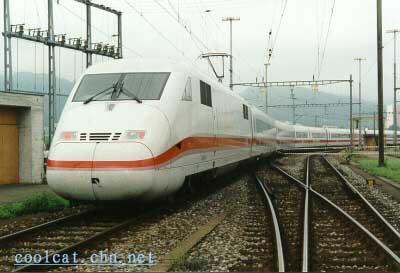
Planners of a second Guangzhou-Hong Kong railway say they have not ruled out magnetic levitation (MagLev) technology even though the Ministry of Railways has shelved the Beijing-Shanghai MagLev plan.
Despite debate over its potential benefits, Guangdong is still "exploring" the MagLev option, with the feasibility study for the railway project well underway, said Yang Tusheng, deputy general manager of Guangdong Railway Group Corp (GRGC).
Whatever technology is used, the new railway will allow for speeds of more than 200 kilometres per hour. This means the journey which currently takes about two hours would be done in less than one hour; and half-an-hour if MagLev is chosen.
Yang stressed that his main concern about MagLev is cost, which will mean higher fares. The price for a single trip on the Guangzhou-Hong Kong through train would cost more than HK$400 (US$50), compared with less than HK$200 (US$25) now.
The world"s only operational MagLev line, between Shanghai"s Lujiazui financial district and Pudong airport, has reportedly run into some technical problems - the tracks are sinking, Shanghai Daily said yesterday but it was not clear if operations would be affected.
Since its inauguration last year, the 30-kilometre, 1.2-billion-euro railway in Shanghai has only been able to achieve 20 per cent of passenger capacity with a single trip priced at 80 yuan (US$9.5), compared to 30 yuan (US$3.5) for the airport shuttle bus.
Yang noted that despite the Beijing-Shanghai MagLev plan being shelved, studies on MagLev usage are still being conducted for several shorter routes, such as between Shanghai and Hangzhou, capital of Zhejiang Province; Beijing and the north China port city of Tianjin; downtown Beijing and the tourist attraction of the Great Wall in Badaling.
The construction of MagLev lines in China, which provides myriad investment opportunities to overseas investors, has caught the attention of industrial giants in Germany, France and Japan.
The application for the construction of the Guangzhou-Hong Kong line will be formally filed with the central government authorities for scrutiny and approval by the end of the year. Yang, at this point, was reluctant to reveal the financial outlay but seems confident of getting the green light for the project.
The participation of Hong Kong officials has actively been sought; and officials from GRGC and the SAR have met "several times" over the project, he said.
According to the GRGC plan, the terminus will be the new Guangzhou railway station, construction of which will start in the city"s Haizhou District in November.
The station is estimated to cost 4.1-5.1 billion yuan (US$494-614 million), and is designed to be the most modern in Asia when it is operational in 2007.
It will be the terminus for the Beijing-Guangzhou railway, and provide passengers with easy access to all other transport services, including metro and light railway, and expressways in the Pearl River Delta.





